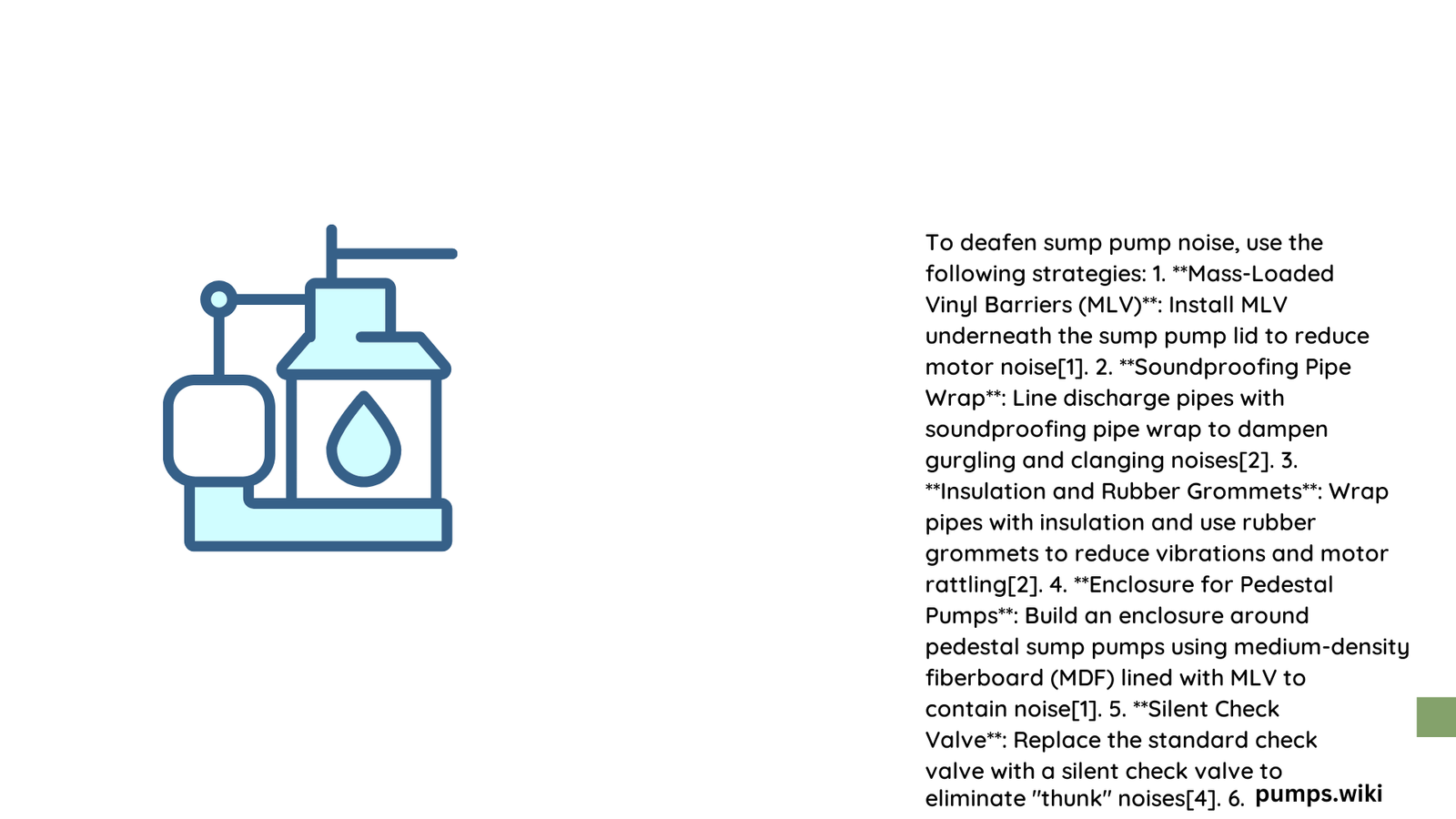Sump pump noise can transform a peaceful basement into an acoustic nightmare, disrupting home tranquility and causing significant stress for homeowners. Excessive operational sounds ranging from 60-80 decibels can penetrate living spaces, creating an uncomfortable environment. This comprehensive guide explores strategic methods to effectively deafen sump pump noise, providing homeowners with practical, scientifically-backed solutions to minimize disruptive sounds and restore basement serenity.
What Causes Sump Pump Noise?
Sump pump noise originates from multiple sources:
- Mechanical Vibrations: Motor and impeller movements
- Water Flow Turbulence: Discharge pipe resonance
- Structural Transmission: Direct sound transfer through floors and walls
How Can You Identify Noise Levels?
| Noise Source | Decibel Range | Potential Impact |
|---|---|---|
| Submersible Pump | 40-60 dB | Moderate Disturbance |
| Pedestal Pump | 60-80 dB | High Noise Pollution |
| Unmitigated Discharge Pipe | 70-90 dB | Significant Disruption |
What Materials Effectively Reduce Sump Pump Sound?

Mass-Loaded Vinyl (MLV) Solutions
MLV provides exceptional sound-blocking capabilities:
– Density ranges from 1-2 pounds per square foot
– Cost-effective: $1-$3 per square foot
– Flexible installation options
– Reduces noise transmission by up to 25 decibels
Acoustic Foam Strategies
Acoustic foam offers targeted noise absorption:
– Lightweight and easy to install
– Absorbs high-frequency sounds
– Reduces echo and reverberation
– Pricing: $1-$5 per square foot
How to Create a Soundproof Sump Pump Enclosure?
Enclosure Construction Steps
- Measure sump pump dimensions precisely
- Select medium-density fiberboard (MDF) as primary material
- Line interior with mass-loaded vinyl
- Create ventilation openings
- Seal edges with acoustic caulk
- Install vibration-dampening strips
What Professional Techniques Minimize Noise?
Advanced Soundproofing Methods
- Pipe Wrap Installation: Reduces water flow noise
- Vibration Isolation Pads: Minimize mechanical transmission
- Discharge Pipe Insulation: Dampens hydraulic sounds
- Strategic Motor Mounting: Reduces structural vibration transfer
What Are Cost-Effective Noise Reduction Strategies?
Budget-Friendly Approaches
- DIY soundproofing materials
- Selective component replacement
- Periodic maintenance
- Targeted acoustic treatments
Maintenance Tips for Long-Term Noise Control
Proactive Sound Management
- Regular lubrication of moving parts
- Check alignment and balance
- Replace worn components
- Monitor vibration levels
- Inspect discharge pipe connections
Technical Specifications for Noise Reduction
Performance Metrics
- Noise Reduction Potential: 20-40 decibels
- Material Effectiveness: Varies by application
- Installation Complexity: Low to moderate
- Average Project Cost: $50-$200
Conclusion
Deafening sump pump noise requires a multi-faceted approach combining material science, strategic installation, and ongoing maintenance. By understanding sound transmission mechanisms and implementing targeted solutions, homeowners can significantly reduce disruptive basement sounds.
Recommended Investment Range
- Basic Soundproofing: $50-$100
- Comprehensive Solution: $150-$300
- Professional Installation: $300-$500
References:
– Soundproof Cow – Sump Pump Noise Reduction
– Sobieski Services – Noise Control Techniques
– CountyOffice.org – Sump Pump Soundproofing
